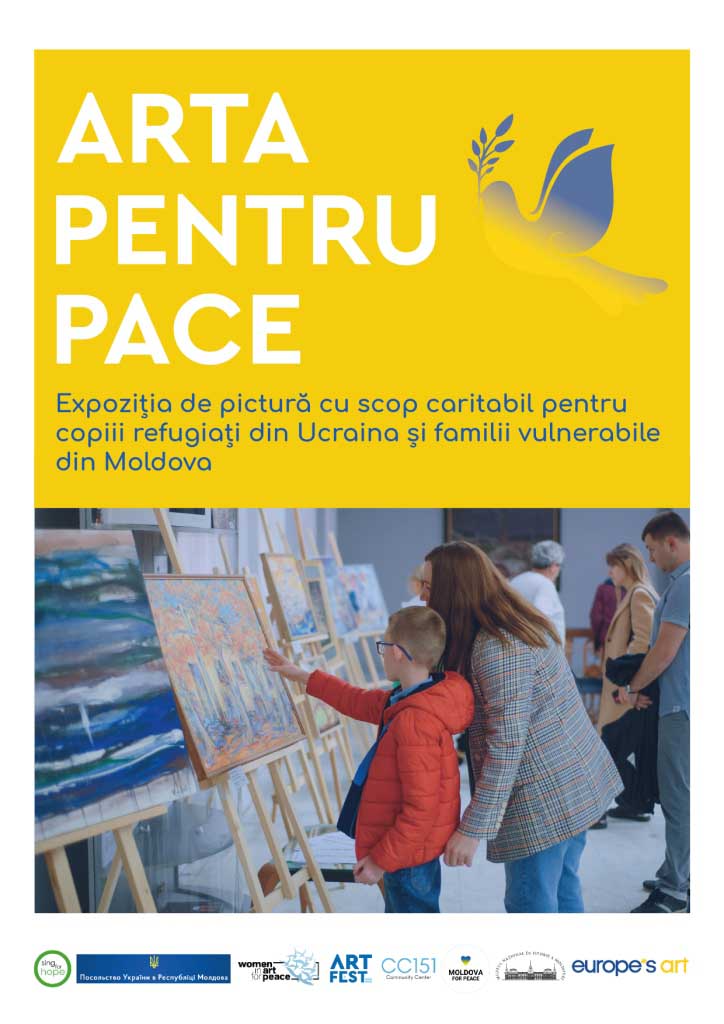 Starting from 10th to 28th of October, the painting exhibition "Art for Peace", a charity exhibition for refugees from the neighboring country and vulnerable families from Moldova, can be visited at the National Museum of History of Moldova.
Starting from 10th to 28th of October, the painting exhibition "Art for Peace", a charity exhibition for refugees from the neighboring country and vulnerable families from Moldova, can be visited at the National Museum of History of Moldova.
The exhibition includes a series of works signed by local plastic artists together with the union of Ukrainian plastic artists from the Republic of Moldova. The exhibition is part of a unique event: on October 5, at the National History Museum of Moldova, a piano painted by refugee children from Ukraine was launched as part of the "Sing for Hope Moldova" project.
Sing for Hope is one of New York City's largest public art projects, bringing artist-painted pianos to the city's parks and public spaces. "Sing for Hope" aims to support children in war zones or in vulnerable situations through art therapy. The amount collected from the sales of paintings will be donated to refugee children in Ukraine. Everyone's joint effort can bring hope to those who are going through such difficult times.
The works of the following artists will be presented at the exhibition: Tatiana Frunze, Eleonora Brigalda, Ştefan Popa, Victor Guţu, Inga Edu, Vasile Dohotaru, Gheorghe Oprea, Damian Furdui, Ofelia Huţul, Mariea Boz, Sabina Volchivschi, Anastasia Petruşco, Veaceslav Bakiţkii, Irina Tricoloci , Alexandr Drobaha, Mihail Statnii.
The project was organized in partnership with the National Museum of History of Moldova, the Embassy of Ukraine in the Republic of Moldova, Art Fest, Moldova for Peace, Community Center 151, Europe's Art Gallery, Women in Art for Peace, the Theater Center of Moldova.
The National Museum of History of Moldova is honored to be among the partners of this charity event, being open to contribute at any time to the promotion of actions to support people in need. The National Museum of History of Moldova is a promoter of peace and peaceful coexistence between peoples.











 31 August 1989 St., 121 A, MD 2012, Chisinau, Republic of Moldova
31 August 1989 St., 121 A, MD 2012, Chisinau, Republic of Moldova

















































